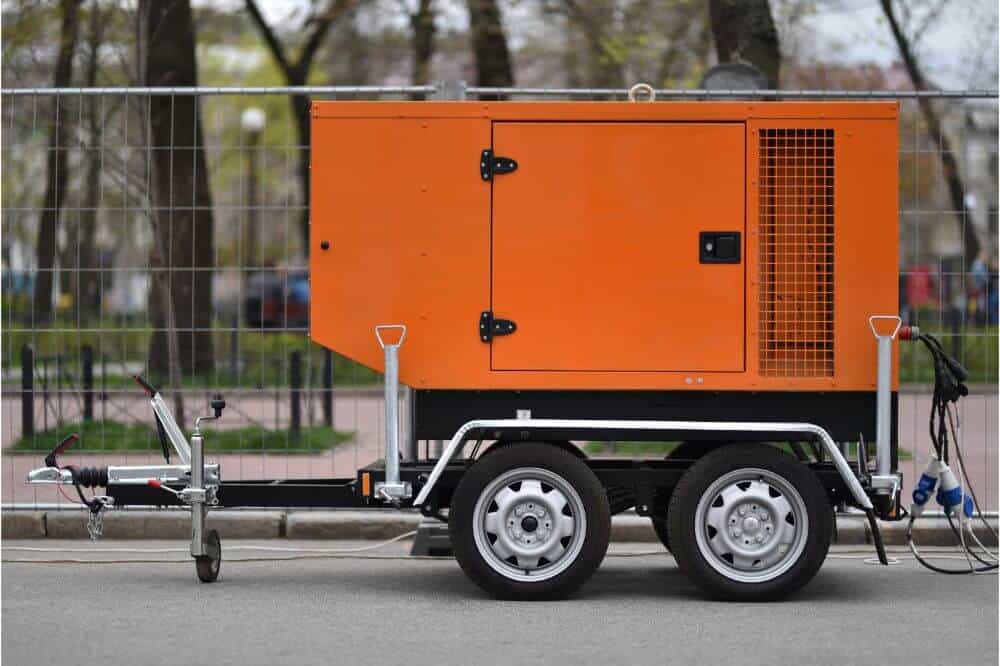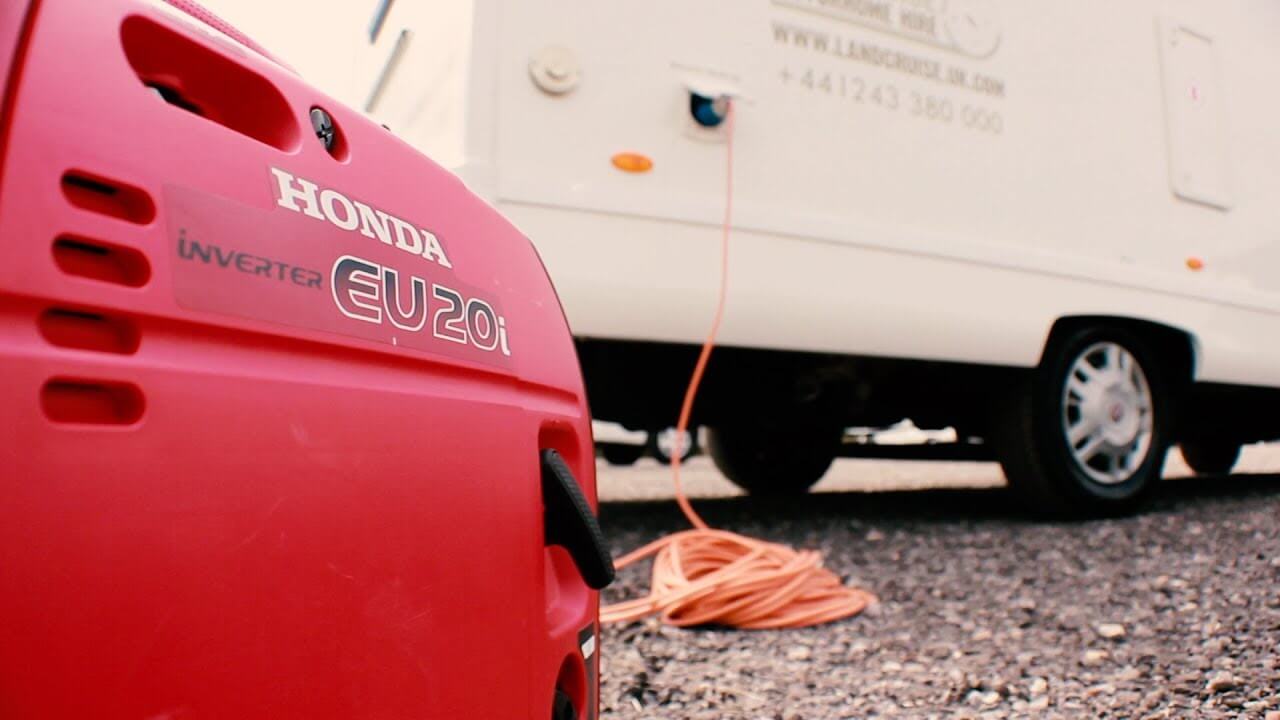How to Use a Generator With a Travel Trailer or Caravan
Traveling with a travel trailer is an incredible experience. You get to enjoy the freedom of the open road, while also relaxing in the comforts of home.
In order to experience the most convenient cooking, entertainment, and comfortable temperatures, a travel trailer needs a source of electricity.
Let’s look at how to use a generator with a travel trailer for those of you adventurous folks that enjoy the open road.
Choosing a Generator for Your Travel Trailer
Many travel trailers come with built-in generators, which makes using them much easier. When buying a generator for your travel trailer, here are a few things to keep in mind.
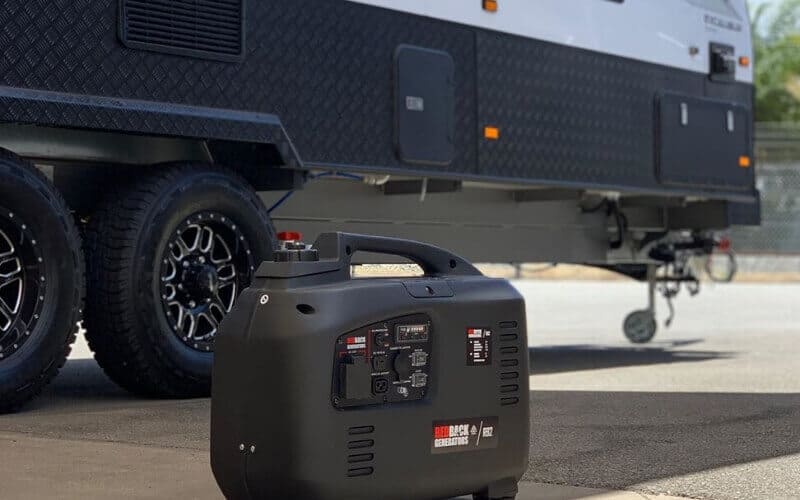
Is Your Travel Trailer “Generator Ready”?
Many travel trailers are already set up for a generator, which usually means they already have a generator transfer switch, an electrical harness, and propane hoses or fuel lines connected.
If you aren’t sure, check your owner’s manual, because otherwise, you will need to purchase and install these components yourself.
Determine How Large Your Generator Needs to Be
Review the wattage requirements for all your trailer equipment, including heating and cooling, hot water, kitchen equipment, and electronics and entertainment.
Note the startup/surge needs of those devices, and choose a generator with a little more power than you require.
You may also look for special appliances and fittings that are designed for RV use and have low startup wattage needs; there are air conditioners, heaters, and kitchen appliances specifically made to have a lower initial power draw for travel trailers.
Choose Your Fuel Source
Most generators use gasoline or propane, which each have its advantages. Either way, you may need to install hoses or pumps to provide fuel to your generator.
A large fuel tank gives you more time and freedom to roam, but can also take up a lot of space in a small trailer.
Pay Attention to Weight
Depending on the size of your travel trailer, adding a generator and fuel tanks can add up to a lot of weight, putting your vehicle over weight capacity for some roads and bridges.
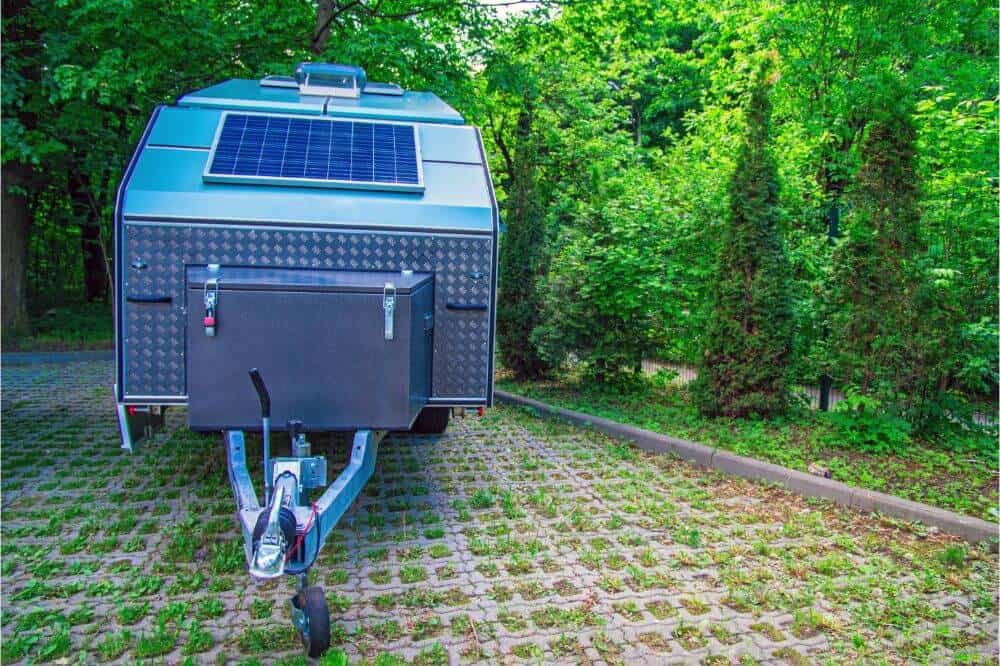
Consider the Noise Level
Generators can be loud, and, depending on where they are located, can be disruptive for your quiet nights in nature. Choose a generator that runs more quietly, or consider adding sound-reducing insulation to the area where it is stored.
Consider How You Want to Start Your Generator
Many generator-ready travel trailers are already wired for remote start generators that turn on with the touch of a button.
Note that your RV batteries should not be regularly used to start a generator, because it can damage your vehicle battery over time.
How to Use a Generator with a Travel Trailer
Once you have chosen your generator, here is how to use it with your travel trailer:
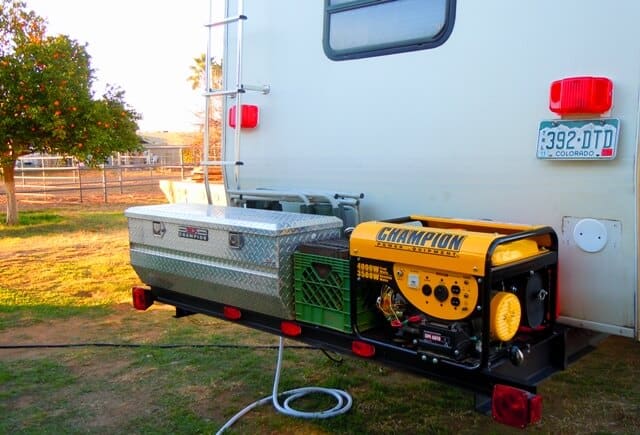
Determine What Kind of Plug or Power Cord Your Trailer Has
Most travel trailers have a plug for external power to rig up a temporary power supply for a generator when needed.
These plugs are usually 30 amps, but not always. Review your owner’s manual to find out, or look at the plug or the breaker panel, which generally lists the amps.
Purchase a Plug For Your Trailer and Generator
Since most campsites offer 30 amp outlets, you may need more than one plug or adapter. Look for male/female plugs with the amps you need, and always choose high-quality weatherproof plugs.
For example, you may need a “15 amp male to 50 amp female” or a “30a 3 prong to 50a female.” You should stock up on a few of these so that you can easily use the power provided at campsites and other areas.
Note that you will again need to refer to the total wattage you expect your travel trailer to use, and make sure that your plugs and adapters are rated for these wattages.
In fact, your watts are limited by the lowest amperage of your plugs and connectors (for example, if you use a 15a to 30a connector, you only have 15 amps to work with).
Here’s what to look for:
Locate the Generator in a Well-Ventilated Area
Ventilation is the most important aspect of generator safety, and it’s important to operate it in an area with ample air circulation and direct the exhaust away from your (and other people’s) campsite.
Make Sure the Generator is Grounded
Most generators come with a grounding rod and copper wire to help them operate more safely.
Plug in the generator, and then turn on your electric devices one by one to see if any of your devices trip under load.
In Conclusion
Choosing a generator–ready travel trailer is the easiest way to use a generator with an RV.
This way you can avoid having to purchase any after-market upgrades and safely plug and play your appliances after hooking up your generator.
If you ensure that you have the right size generator for all your temporary needs will help you enjoy your camping trips and life on the road. Once you’ve done that, the connection is easy.

